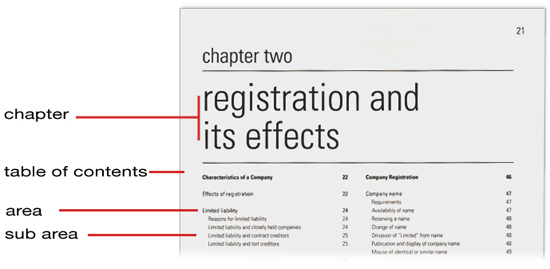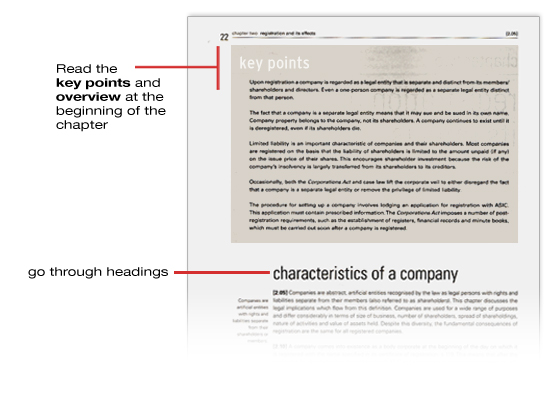Reading skills
Information on how to read efficiently and effectively.
Manage your reading when studying Company Law. Start from the big picture – gain an overview of the topic.
The lecture PowerPoints provide a guide to what is important for each Company Law topic – read, understand and make your own notes before the lecture and before reading the textbook.
Look at the table of contents in each chapter – this gives you an overview of the areas and subareas in the chapter.
Read the key points/overview at the beginning of the chapter.


On another page, the 'key points' section has been highlighted with the text in the margin reading: "Read the key points and overview at the beginning of the chapter". A heading on the same page has been highlighted with text in the margin reading: "Go through headings".
Go through headings in the chapter to understand the structure of the topic as well as any charts, diagrams, flowcharts and tables which explain the text.
Read relevant sections of the chapter highlighting key points, legislation and cases.
Make a mind map and/or summary of the key headings and subheadings in this topic and their relationship with each other.
Test your knowledge by redoing quick mind maps and summaries. Each time you redo a summary or mind map, you remember more. You also find out where the gaps in your knowledge are.
Don't just summarise the whole chapter. Instead use the lecture PowerPoints as a guide for your reading and notes. This way you can focus on the topics and subtopics that are important for the lecture. Not everything is relevant to remember in each chapter of your textbook.